Why is titanium-coated flatware becoming more popular?
You want your restaurant to stand out with unique, colored flatware. But you're afraid it will chip or peel, looking cheap and unprofessional after just a few washes.
Titanium-coated flatware is popular because it offers stunning modern colors like matte black and gold with extreme durability. The PVD coating process makes it scratch-resistant, dishwasher-safe, and completely food-safe, solving the classic trade-off between beauty and brawn.
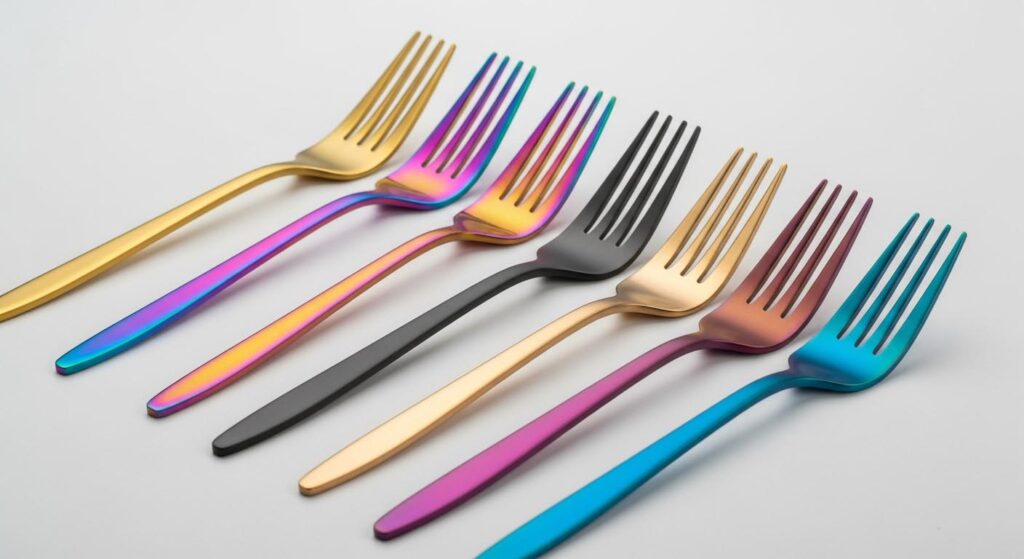
The demand for titanium-coated flatware1 has exploded over the last few years. My clients, from luxury hotels in Singapore to design-forward restaurants in New York, are all moving in this direction. They need flatware that not only matches their modern aesthetic but can also survive the intense reality of a commercial kitchen. PVD titanium coating2 is the technology that makes this possible. It's not a paint or a simple plating; it's a high-tech process that fundamentally changes the surface of the steel, delivering benefits in durability, aesthetics, and safety. A professional buyer like Jacky now sees it as a practical, long-term investment, not just a fleeting trend.
Why coat stainless steel with titanium?
Standard stainless steel is reliable but visually limited. You want a unique color to match your brand, but you know that any kind of painted finish will fail almost immediately.
Stainless steel is coated with titanium to add a layer of extreme scratch resistance and to achieve a wide range of brilliant, modern colors. This PVD coating is molecularly bonded, creating a beautiful finish that won't chip or peel.
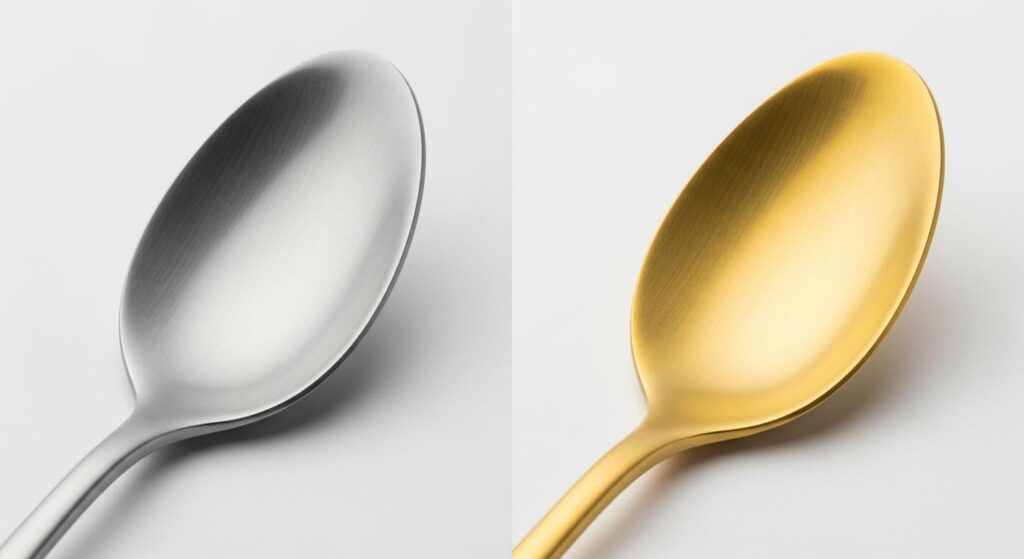
The decision to coat high-quality stainless steel with titanium is about getting the best of both worlds. We start with a strong foundation and then add a layer of technological and aesthetic enhancement. In my factory, this is how we approach it.
Unprecedented Durability and Practicality
The number one reason is strength. The process, called Physical Vapor Deposition (PVD)3, isn't a paint. It takes place in a vacuum chamber where the titanium is vaporized and bonded to the stainless steel on a molecular level. This creates a ceramic-like surface that is incredibly hard and resistant to scratches and wear. It's the same technology used on luxury watches and industrial drill bits because it is built to withstand friction and abuse. This means flatware can handle the daily grind of a restaurant without showing its age.
An Explosion of Color and Modern Aesthetics
Durability is key, but aesthetics drive the trend. PVD coating allows us to create a stunning palette of colors that were previously impossible to achieve permanently. The most popular are:
- Matte Black
- Gold & Rose Gold
- Bronze & "Champagne"
- Iridescent ("Rainbow")
This allows designers to perfectly match their flatware to their decor, creating a cohesive and memorable guest experience.
Are titanium coated cutlery safe?
You're seeing beautiful new finishes on flatware. But a nagging voice in your head wonders if these coatings are just chemicals that could be harmful to your diners.
Yes, titanium-coated cutlery is completely safe. Titanium is a proven biocompatible and inert material, widely used for medical implants. The coating is fully bonded to the steel and does not react with food or leach any substances.
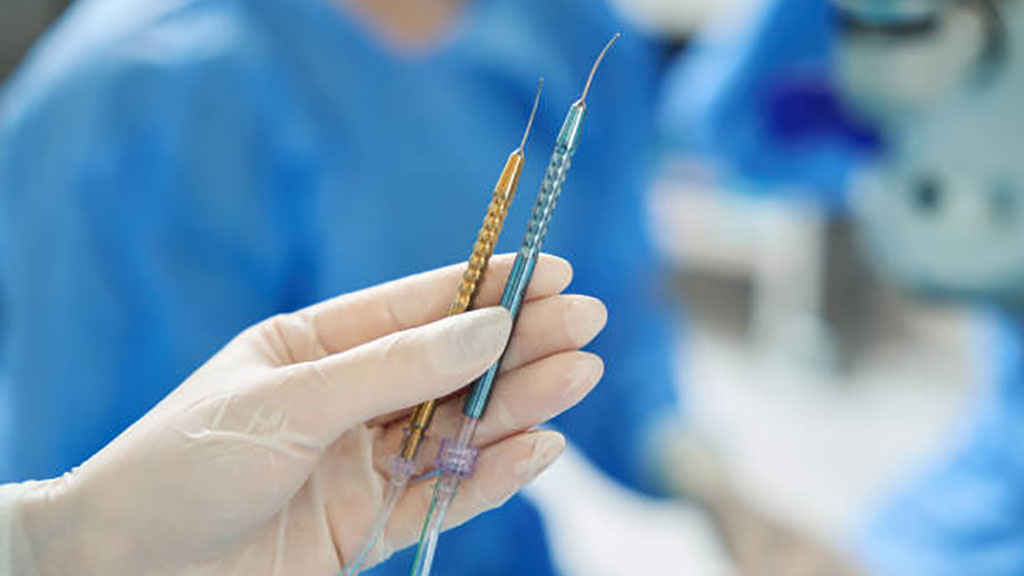
This is the most important question a client can ask, and the answer is an absolute, confident yes. The safety of PVD titanium coating is not a matter of opinion; it's based on decades of scientific and medical use. When I discuss this with a detail-oriented buyer like Jacky, I focus on two key properties.
Biocompatible and Inert
"Biocompatible4" is a technical term with a very simple meaning: the human body accepts it without any negative reaction. This is why titanium is the gold-standard material for medical devices surgically placed inside the body, like hip replacements, bone screws, and dental implants. Our bodies don't see it as a foreign substance. Being "inert" means it doesn't react chemically with its environment. It won't react with acids in food (like lemon juice or vinegar) or with salts. This prevents any metallic taste and guarantees nothing from the coating transfers to the food.
Hypoallergenic
Because of its inert properties, titanium is also hypoallergenic. It's a safe choice for everyone, including people who might have sensitivities or allergies to other metals like nickel. For a restaurant or hotel, this level of universal safety is a critical assurance.
Does titanium coating rust?
You invested in beautiful gold or black flatware. Now you're worried that these sleek new colors will betray you by showing spots of rust or tarnish, ruining your entire investment.
No, a titanium coating does not rust and actually increases the rust resistance of the flatware. Titanium is a non-corrosive metal, and the PVD coating adds a sealed, protective layer over the already rust-resistant stainless steel.
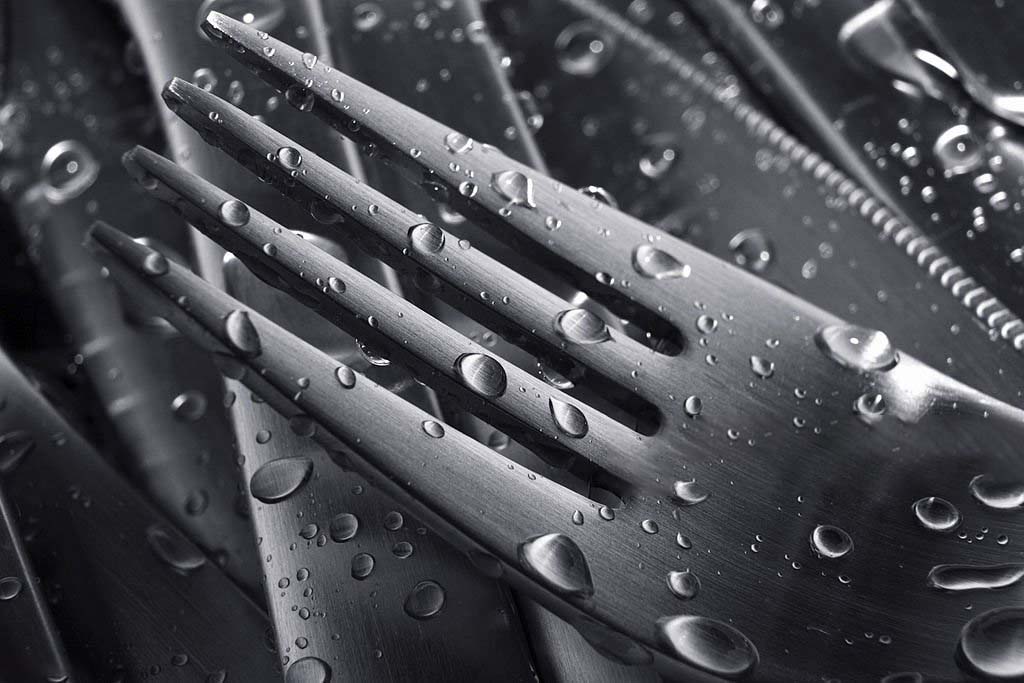
The fear of rust is completely understandable, especially with a new-looking product. However, titanium coating provides double protection against any kind of corrosion. It's a key selling point I emphasize with every client who is making a significant investment in our colored flatware.
A Two-Layer Defense System
The process starts with a high-quality base material. For all our premium flatware, this is 18/10 stainless steel. The "18" refers to its 18% chromium content, which is the primary element that provides excellent rust resistance. This is already a very robust material on its own. The titanium PVD coating is then applied over this strong base. Titanium is an element that is exceptionally resistant to corrosion; it's used in marine and aerospace applications for this very reason. This coating acts as a second, non-porous shield. It seals the stainless steel underneath from the salts, acids, and harsh detergents found in a commercial kitchen environment.
Performance in a Harsh Environment
A restaurant dishwasher is an extreme test. The combination of high heat, powerful water pressure, and chemical detergents can attack lesser materials. The dual protection of 18/10 steel plus a PVD titanium coating ensures the flatware remains pristine wash after wash, year after year.
How long does titanium coating last?
You're ready to invest in colored flatware. But you've been burned before by so-called "durable" finishes that scratch, chip, or fade within months. You need absolute confidence this is a long-term solution.
A high-quality PVD titanium coating is designed to last for the lifetime of the flatware. Its molecular bond to the steel makes it extremely resistant to scratches, chipping, and fading from thousands of commercial dishwasher cycles.
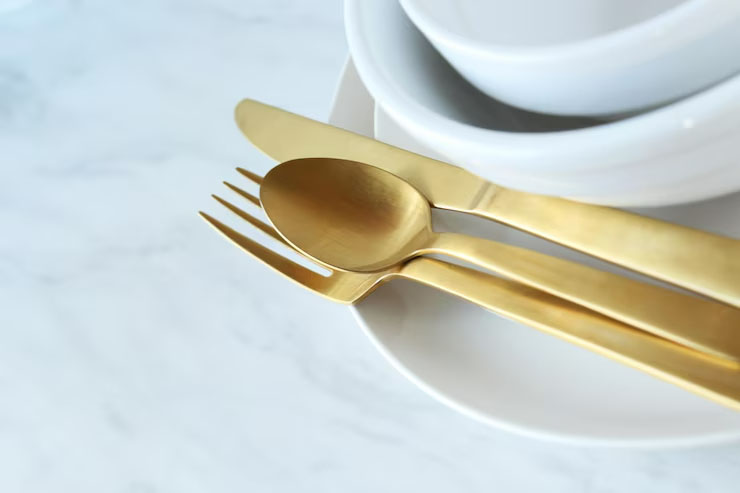
When a hotel purchasing manager asks me about longevity, they are asking about return on investment. My answer is that PVD titanium is not a cosmetic feature; it's a permanent upgrade to the flatware's durability. The lifespan is not measured in months, but in years and thousands of uses.
It's a Bond, Not a Layer of Paint
The key is to remember how the coating is applied. It is not paint, electroplating, or any kind of lacquer that sits on top of the surface waiting to be peeled or chipped off. The Physical Vapor Deposition (PVD) process creates a molecular bond. For all practical purposes, the coating becomes one with the steel. You would have to take an abrasive material and physically grind away the surface of the steel itself to get through the coating. With normal use—even the intense use seen in a busy restaurant—the finish remains intact.
Real-World Performance
I have hotels that I supplied with matte black PVD flatware over five years ago. They use it for daily service and it goes through their commercial dishwashers multiple times a day. It still looks fantastic. While nothing is truly indestructible—and dragging it across concrete would certainly damage it—it is more than tough enough for any dining environment. The PVD coating is designed to last as long as the fork itself.
Conclusion
Titanium PVD coating delivers stunning color, extreme scratch resistance, and total food safety. It's the modern solution for beautiful flatware that is built to last in any high-end hospitality environment.
-
Discover why titanium-coated flatware is a smart choice for modern restaurants and luxury hotels. ↩
-
Explore this link to understand how PVD titanium coating enhances durability and aesthetics in flatware. ↩
-
Explore this link to understand how PVD technology enhances durability in various industries, including luxury goods. ↩
-
Understanding biocompatibility is crucial for anyone interested in medical technology and its applications. ↩
